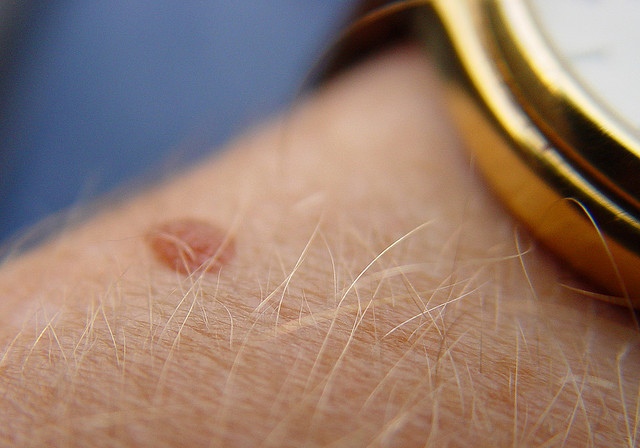Moles are very common. It’s normal to have between 10 and 40 by the time you reach adulthood. Most moles aren’t dangerous, but some can be cancerous. That’s why it’s important to check with a doctor before removing a mole.

If you’re concerned about a mole, only a doctor can determine if it is non-threatening. If your doctor says the mole is not life endangering, it’s possible to remove it using a simple mole remover. Look for a solution that is safe and made from natural, high-quality homeopathic extracts. This is going to ensure little to no scarring, and less irritation during the healing process.
Types of Moles
There are two types of moles: congenital nevi and dysplastic nevi. Congenital nevi are the moles you’re born with. Unfortunately, these moles are more likely to become cancerous than dysplastic moles, or moles that appear after birth. About one in 100 people are born with congenital moles, according to WebMD.
Dysplastic moles are sometimes called “atypical.” Unfortunately, if you have four or more atypical moles, you have a higher risk of getting melanoma. If you’ve already had melanoma or melanoma runs in your immediate family, your risk increases even more.
Most moles aren’t dangerous, and they don’t require removal except for cosmetic purposes. Removing a mole is a simple procedure, and can take place at home. If your doctor or dermatologist has to remove the mole, the procedure is a bit more complicated (but still quick and almost painless). The doctor will numb the area and then shave or cut the mole from your body. Sometimes stitches are required, sometimes not.
How to detect if a Mole is Cancerous
Only a doctor or dermatologist can tell you without-a-doubt that a mole is or isn’t cancerous. Although you can’t be certain a mole is cancerous on your own, there are some signs that it could potentially be a
dangerous mole. Active Beat recommends telling your doctor if you notice any of the following changes:
Colorchanges – Moles can be tan, brown, black, blue, white, or red. If you notice a color change, it could be a sign of melanoma.
Sizechanges – Moles are typically small than a pencil eraser; although, a larger than normal moles doesn’t necessarily spell disaster. If you notice a mole has changed its height, size, or surface texture, you should ask your doctor to look at it.
Pain and other irregularities – Any time you’re concerned about a mole, let your doctor look at it. It’s better to be safe than sorry. If you notice a mole is irregular around its edges, painful to the touch, or it’s bleeding or releasing fluids, you should schedule a skin exam immediately.
It can‚Äôt be said enough that most moles are harmless, and yet melanoma is so dangerous they should be investigated by a medical professional. The earlier you notice and get treated a suspicious mole the better. Skin cancer is most treatable in its earliest stages, and that‚Äôs a good reason to ask your doctor to inspect a mole. If she determines it‚Äôs non-threating, feel free to remove it for cosmetic reasons if you so wish. ¬Ý



I have a large mole on my back that I was born with, so I assumed that it isn’t something I should be terribly concerned about. I guess I should be if congenital moles have a higher chance of turning cancerous! Is it a concern if a mole only occassionally is tender (but most of the time isn’t)? Because every once in a very rare blue moon I’ll be scratching my back and my mole will hurt. Guess I should visit a derm anyway; it’s better to be safe than sorry.
This is some great information, and I appreciate your point that only a doctor can check to see if a mole is cancerous. I have several moles, and one of them looks abnormal, but it has been that way for a while. I’ll definitely look into having it checked by a doctor just to be on the safe side. Thanks for the great post!
Very informative article! Removing moles with laser is an effective and painless procedure. It remove the moles permanently and no scar left behind. Thanks.